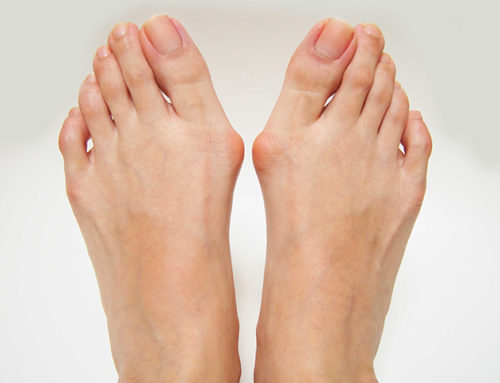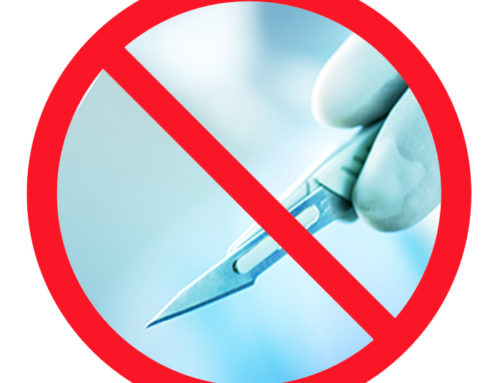The big myth about plantar heel pain
One of the biggest myths propagated about plantar heel pain is the perception that 90 percent of all patients will experience cure of their condition with conservative treatment. I just finished writing an upcoming cover story for Podiatry Today reviewing published studies of non-traditional treatments for chronic plantar heel pain. Upon reading over 100 articles on this subject, I was struck by the repetitive proclamation that “conservative treatment will resolve plantar heel pain in 90 percent of all cases.”1-13 This authoritative statement appears in many journals and has been published by multiple disciplines. The authors reporting a 90 percent cure rate for conservative treatment of plantar heel pain include primary care physicians, orthopedic surgeons and podiatric physicans.1-13
The authors usually fail to describe the actual time frame or the criteria for achieving what they often describe as “cure” or “successful resolution” of the condition.1-4 The conservative treatments recommended in these articles generally included rest, stretching, physical therapy, shoe inserts, non-steroidal anti-inflammatory drugs (NSAIDs) and corticosteroid injections. Some of these treatments require implementation by a clinician while most are home-based, patient-directed interventions.
The general public also sees references to this “90 percent success rate” for self-treatment of plantar heel pain when they research the condition on the Internet. Consider this post by the American Academy of Orthopedic Surgeons, which states:14
“More than 90% of patients with plantar fasciitis will improve within 10 months of starting simple treatment methods. The treatment methods include rest, ice, stretching exercises and use of over the counter anti-inflammatory medication (NSAIDs).”14
While this proclamation does not promise a cure in 10 months (only improvement), it raises certain questions. Where did the magical 10-month time frame come from? In reality, many authors suggest, without any supporting data, almost immediate success with conservative treatment of plantar heel pain.1-13 Either way, where are the studies showing cures for 90 percent of patients with plantar heel pain within 10 months by doing simple icing, stretching and taking NSAIDS? Sadly, there are no quality studies showing that conservative treatment of patients with plantar heel pain using either home-based or physician-implemented treatments will experience such a cure rate or be cured within the aforementioned 10-month time frame.
In fact, a recent high-quality study verifies the fact that the same usual home treatments for plantar heel pain are ineffective in reducing pain and improving function in a reasonable period of time.15
In their systematic review and meta-analysis of 31 randomized controlled trials (RCTs), Babatunde and coworkers studied four common conservative interventions for treating plantar heel pain.15 The authors questioned the effectiveness of using NSAIDs and a home-based, non-individualized exercise program. Basically, the data from multiple studies fail to show any significant short-term (one to six weeks) or medium-term (six to 12 weeks) benefit. This study did show some benefit of home exercises but only in the long-term or after 12 weeks of treatment.
In my experience, patients presenting to a clinician for initial evaluation of their plantar heel pain have expectations that treatment will be able to resolve their symptoms in a brief period of time, perhaps within a month or two. Certainly, proposing that a treatment program will not give relief of pain for at least three months would be met unfavorably by most patients.
Whether home-based or implemented by a clinician, conservative treatment of plantar heel pain does not have a 90 percent success rate within a 12-week time frame.
Consider a study conducted by Hansen and coworkers who followed 174 patients, 10 years after they had been diagnosed with plantar fasciitis.16 Despite receiving an average of 3.8 different treatments, 45 percent of the patients were still symptomatic after 10 years. The symptoms were relatively mild, averaging two to three points on a 10-point visual analog pain scale. In the asymptomatic group, the plantar heel pain had lasted a mean 725 days before resolution. The most common treatments attempted were corticosteroid therapy (93 percent), insoles (79 percent), physical therapy (66 percent) and NSAIDs (46 percent).
Overall, this study showed that the risk of having pain from plantar fasciitis was 80.5 percent after one year from onset of symptoms, 50.0 percent after five years, 45.6 percent after 10 years and 44.0 percent to have pain which lasts 15 years from the onset of symptoms.16 The authors cite other studies showing that between 18 and 49 percent of patients are still symptomatic after conservative treatment for plantar heel pain after a follow-up of 1.5 to five years.17-21
The lesson learned from the study by Hansen and colleagues is the fact that when patients wait more than eight months to seek professional treatment for plantar heel pain, they jeopardize the prognosis for successful conservative treatment.16 The patients who eventually did become asymptomatic with conservative treatment had their symptoms for 256 days before seeking treatment while those who remained symptomatic for 10 years had their symptoms for 365 days before obtaining professional care.
Despite these published studies showing relatively dismal results from conservative treatment of plantar heel pain, we continue to see propagation of the myth of conservative therapy resolving plantar heel pain in 90 percent of patients. One should note that the studies I have cited thus far did NOT include custom foot orthoses as part of the conservative treatment protocol. However, even including all treatments which a podiatric physician might implement, there is doubt that these achieve 90 percent success in less than a 12-week time frame. I stood on the podium at many podiatric conferences and asked how many clinicians in the audience could cure 90 percent of all patients with plantar heel pain with conservative treatment interventions. Few people raise their hands.
If these conservative treatments for plantar heel pain are successful 90 percent of the time, why are clinicians continuing to seek new options to treat chronic plantar heel pain? Why is there such great interest in platelet rich plasma (PRP) injections, extracorporeal shock wave therapy (ESWT) and laser therapy?
REFERENCES
-
Goff JD, Crawford R. Diagnosis and treatment of plantar fasciitis. Am Fam Physician. 2011;84(6):676–682.
-
Chacko K. Heel pain: diagnosis and treatment. Primary Care Case Rev. 2003;6:50–56.
-
Lareau CR, Sawyer GA, Wang JH, DiGovanni CW. Plantar and medial heel pain: diagnosis and management. J Am Acad Orthop Surg. 2014;22(6):372-380.
-
Davis PF, Severud E, Baxter DE. Painful heel syndrome: Results of nonoperative treatment. Foot Ankle Int. 1994;15(10):531-535.
-
Rompe JD, Furia J, Weil L, Maffulli N. Shock wave therapy for chronic plantar fasciopathy. Br Med Bull. 2007;81-82:183-208.
-
Brotzman SB. Clinical Orthopaedic Rehabilitation. Philadelphia: Elsevier; 2003.
-
Thomas JL, Christensen JC, Kravitz SR, et al. American College of Foot and Ankle Surgeons Heel Pain Committee. The diagnosis and treatment of heel pain: a clinical practice guideline-revision 2010. J Foot Ankle Surg. 2010;49(3)(Suppl):S1-19.
-
Rano JA, Fallat LM, Savoy-Moore RT. Correlation of heel pain with body mass index and other characteristics of heel pain. J Foot Ankle Surg. 2001;40(6):351–356.
-
Ozdemir H, Soyuncu Y, Ozgorgen M, Dabak K. Effects of changes in heel fat pad thickness and elasticity on heel pain. J Am Podiatr Med Assoc. 2004;94(1):47–52.
-
Shikoff MD, Figura MA, Postar SE. A retrospective study of 195 patients with heel pain. J Am Podiatr Med Assoc. 1986;76(2):71–75.
-
Kinley S, Frascone S, Calderone D, Wertheimer SJ, Squire MA, Wiseman FA. Endoscopic plantar fasciotomy versus traditional heel spur surgery: a prospective study. J Foot Ankle Surg. 1993;32(6):595–603.
-
Lynch DM, Goforth WP, Martin JE, Odom RD, Preece CK, Kotter MW. Conservative treatment of plantar fasciitis. A prospective study. J Am Podiatr Med Assoc. 1998;88(8):375–380.
-
Meltzer EF. A rational approach to the management of heel pain. A protocol proposal. J Am Podiatr Med Assoc. 1989;79(2):89–92.
-
OrthoInfo. Plantar fasciitis and bone spurs. https://orthoinfo.aaos.org/en/diseases–conditions/plantar-fasciitis-and-bone-spurs. Accessed September 8, 2020.
-
Babatunde OO, Legha A, Littlewood C, et al. Comparative effectiveness of treatment options for plantar heel pain: a systematic review with network meta-analysis. Br J Sports Med. 2019;53(3):82–94.
-
Hansen L, Krogh TP, Ellingsen T, Bolvig L, Fredberg U. Long-term prognosis of plantar fasciitis: a 5- to 15-year follow-up study of 174 patients with ultrasound examination. Ortho J Sports Med. 2018;6(3):2325967118757983.
-
Davis PF, Severud E, Baxter DE. Painful heel syndrome: results of nonoperative treatment. Foot Ankle Int. 1994;15(10):531-535.
-
Digiovanni BF, Nawoczenski DA, Malay DP, et al. Plantar fascia specific stretching exercise improves outcomes in patients with chronic plantar fasciitis: a prospective clinical trial with two-year follow-up. J Bone Joint Surg Am. 2006;88(8):1775-1781.
-
Furey JG. Plantar fasciitis: the painful heel syndrome. J Bone Joint Surg Am. 1975;57(5):672-673.
-
Martin RL, Irrgang JJ, Conti SF. Outcome study of subjects with insertional plantar fasciitis. Foot Ankle Int. 1998;19(12):803-811.
-
Wolgin M, Cook C, Graham C, Mauldin D. Conservative treatment of plantar heel pain: long-term follow-up. Foot Ankle Int. 1994;15(3):97-102.




